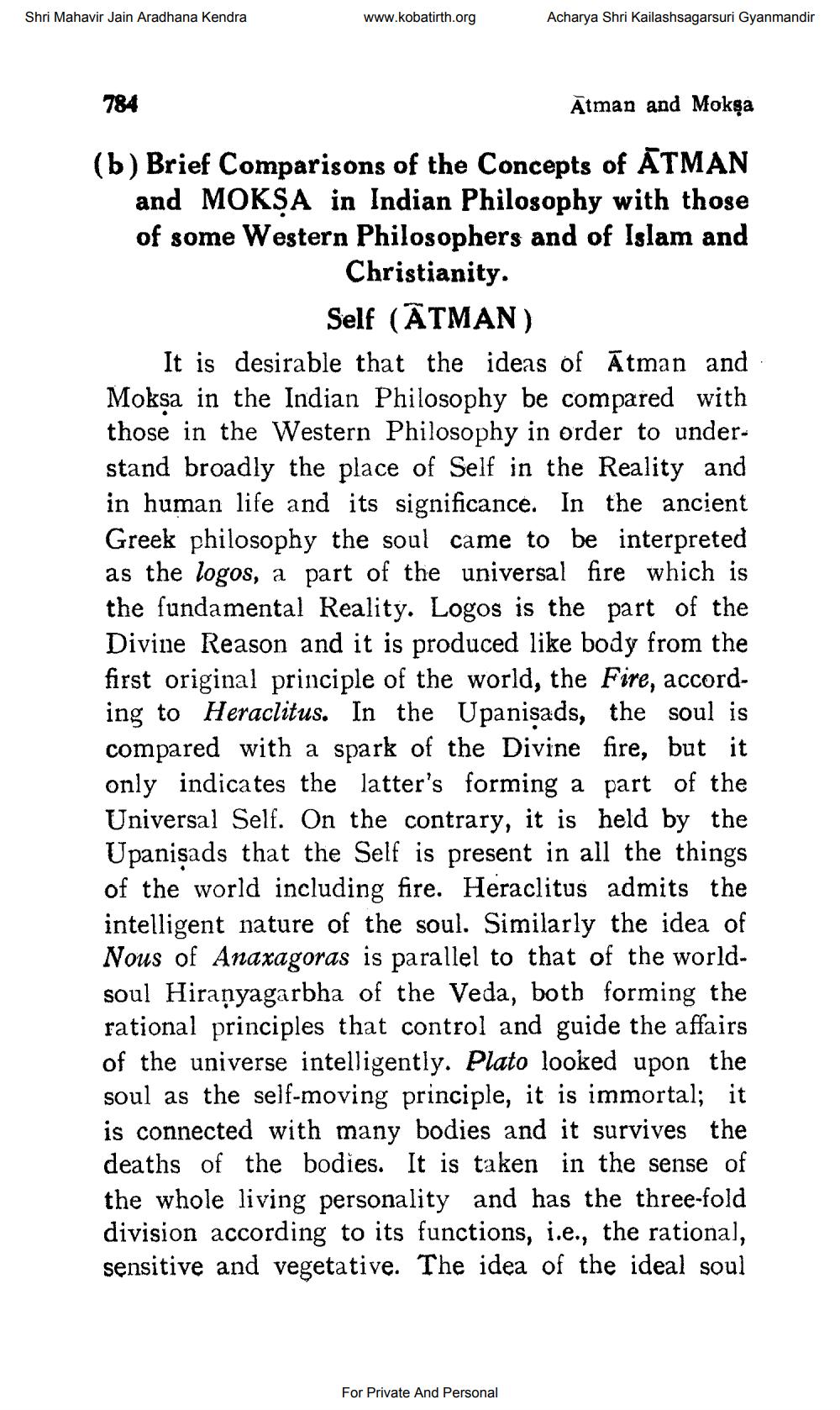________________
Shri Mahavir Jain Aradhana Kendra
www.kobatirth.org
Acharya Shri Kailashsagarsuri Gyanmandir
784
Atman and Mokga
(b) Brief Comparisons of the Concepts of ĀTMAN
and MOKSA in Indian Philosophy with those of some Western Philosophers and of Islam and
Christianity.
Self (ATMAN) It is desirable that the ideas of Ātman and Moksa in the Indian Philosophy be compared with those in the Western Philosophy in order to understand broadly the place of Self in the Reality and in human life and its significance. In the ancient Greek philosophy the soul came to be interpreted as the logos, a part of the universal fire which is the fundamental Reality. Logos is the part of the Divine Reason and it is produced like body from the first original principle of the world, the Fire, according to Heraclitus. In the Upanisads, the soul is compared with a spark of the Divine fire, but it only indicates the latter's forming a part of the Universal Self. On the contrary, it is held by the Upanisads that the Self is present in all the things of the world including fire. Heraclitus admits the intelligent nature of the soul. Similarly the idea of Nous of Anaxagoras is parallel to that of the worldsoul Hiranyagarbha of the Veda, both forming the rational principles that control and guide the affairs of the universe intelligently. Plato looked upon the soul as the self-moving principle, it is immortal; it is connected with many bodies and it survives the deaths of the bodies. It is taken in the sense of the whole living personality and has the three-fold division according to its functions, i.e., the rational, sensitive and vegetative. The idea of the ideal soul
For Private And Personal




